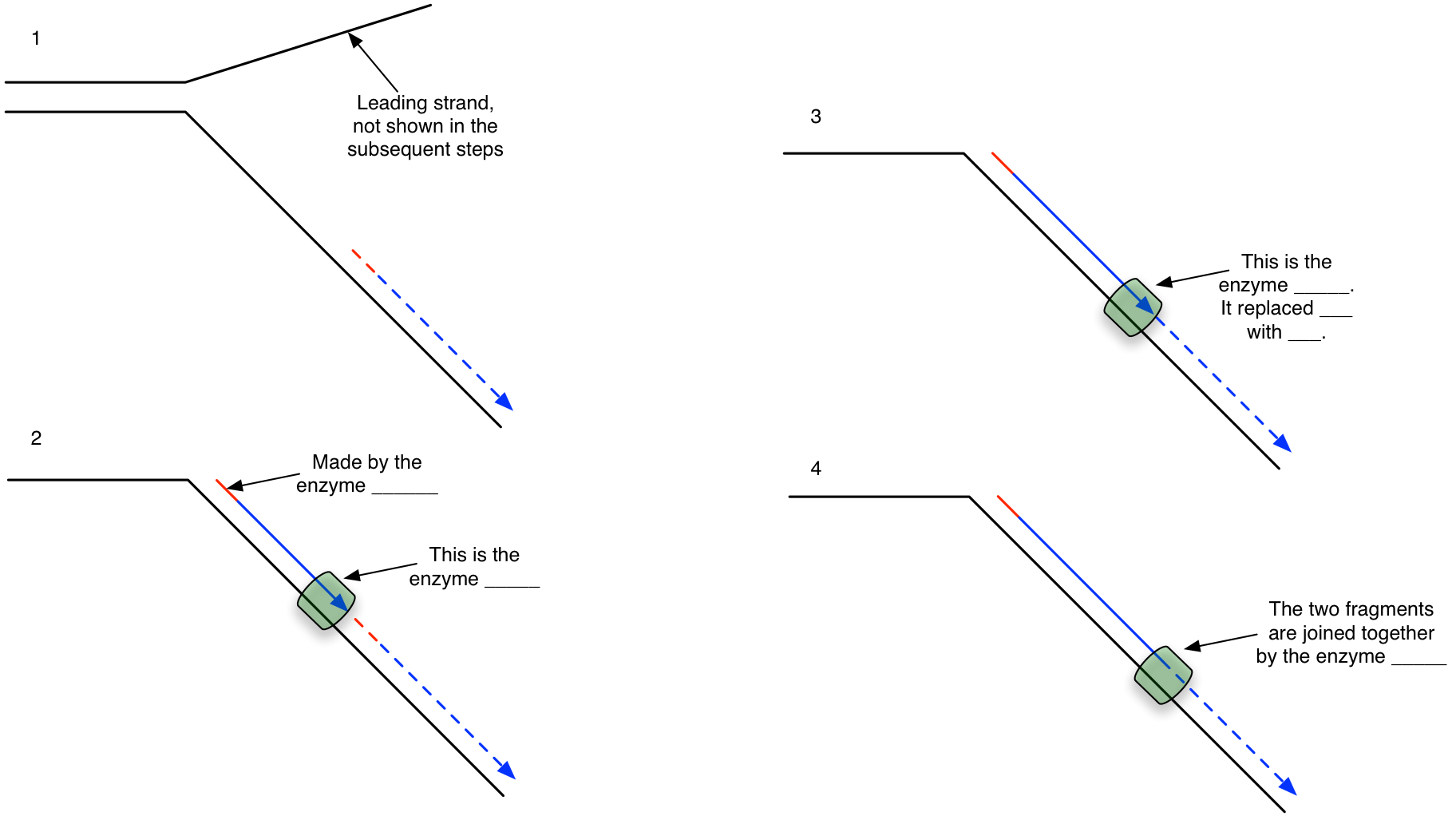- DNA polymerases
- Principles of replication
- Enzymes involved in replication
- Replicating the lagging strand
- Replicating the bacterial chromosome
1. Before you start this topic, you need to understand the structure of dsDNA, the principles of replication, and the properties and activities of all enzymes involved in DNA replication.
2. The information you need to study this section is in the section on DNA replication in your textbook (pages 210 and 211). It is very important that you also study the relevant notes you took during lecture.
3. In class we discussed the fact that the two strands of DNA are replicated slightly different. It is important to know the reason why one of the strands is leading, while the other one is lagging. Review the principles of replication and the activities of DNA polymerases and think about the following questions:

- Which activity of DNA polymerase is the reason why the two strands are replicated differently?
- Which strand of DNA is leading, and which one is lagging?
- The lagging strand has to be replicated piece by piece, what are the fragments of DNA produced during this process called?
4. The replication of the lagging strand involved the production of DNA fragments, which are subsequently joined. Let's start by outlining the process of producing one such fragment. This process involves two steps listed below, performed by two enzymes. On a piece of paper, answer the following questions:
- What is the name of the enzyme that starts fragments?
- What does the first enzyme synthesize (DNA, RNA, protein) and what is it called?
- Which enzyme extends the fragment?
5. Now, think of a fragment that has been synthesized. After the DNA is unwound a bit more, the replication machinery starts to make the next fragment and at some point reaches the previous one. How are the two put together? The best way to study this is to draw a diagram that illustrates the process. On a separate piece of paper, draw a diagram that contains the following steps. On the diagram, use different colors for RNA, DNA, proteins (enzymes). You will be drawing a diagram that illustrates two fragments and how they are joined together. Use dashed lines for the fragments that is produced first, and solid lines for the fragment that is produced second. This will help you follow the process more easily.
- Start with a replication fork open to the right, leading strand on top, lagging strand on bottom. Ignore the leading strand for this diagram, just focus on the lagging strand. On the first diagram, place a fragment that has been synthesized on the lagging strand, leaving some space for a new fragment that will be synthesized next.
- Place the new fragment that is synthesized away from the replication fork. Label the different parts of the new fragment and write down the enzymes that synthesize each part. The new fragment should stop when the enzymes making it encounter the previous fragment (which you drew in step 1).
- On the next step, indicate what happens at the 5' end of the previous fragment. What enzyme is responsible for that? Which activities are responsible for what it does?
- On the final step, indicate how the two fragments are put together. Make sure to label the enzyme that does that.
6. If you are ready, proceed to the last topic in DNA replication, which discusses how the bacterial chromosome is replicated.